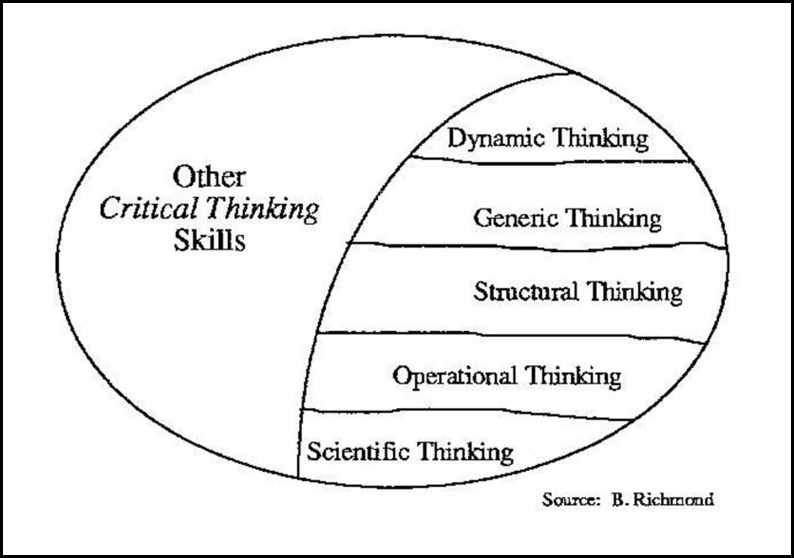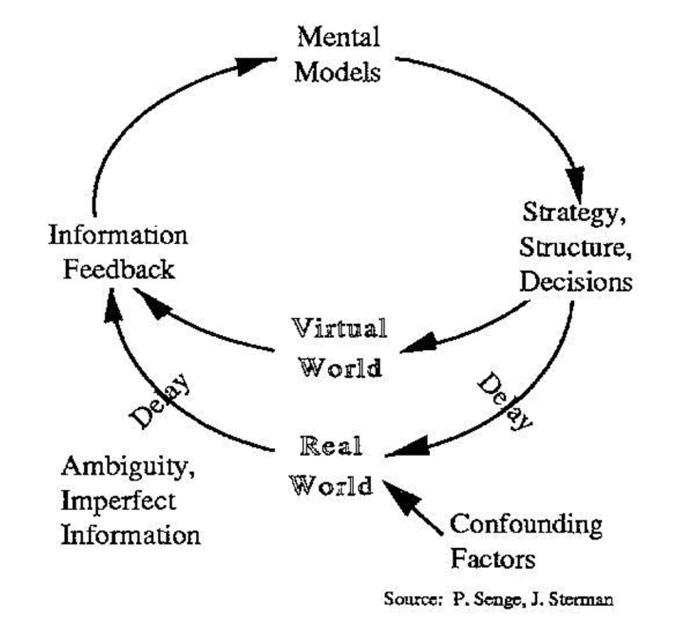Learning emerged as the key topic at the 1990 International System Dynamics Conference. The conference, held July 10-13 in Massachusetts, brought together people from over 30 countries, including England, the Netherlands, Spain, Norway, Germany, Mexico, Venezuela, Japan, China, and Russia. The three-volume conference proceedings covered topics as diverse as deterministic chaos and employment problems in China (see sidebar for selected listing of paper topics). Speakers from all facets of the field — academics, managers, consultants — addressed system dynamics’ unique contribution toward facilitating the learning process.
Over one-third of all the papers discussed some aspect of learning — from the use of computers in the classroom (“Systems, Science, and Schools”) to the design of learner-directed learning environments (“Designing Learning Environments”).
The central issue — and challenge — facing all those involved in systems thinking is how to enhance the learning process and accelerate the rate at which people internalize the principles and concepts of systems thinking. Barry Richmond of High Performance Systems, Inc. (Lyme, NH) presented the challenge eloquently in his paper “Systems Thinking: A critical set of Critical Thinking Skills for the 90’s and Beyond,” in which he offered a framework for dis-cussing the task ahead.
If systems thinking is a powerful aid for managing in a world of ever-increasing complexity, then the challenge that must be addressed, according to Richmond, is “How can the framework, process and technologies of systems thinking he transferred to the rest of the world in an amount of time that is considerably less than what it currently takes to get a Master’s or Ph.D. degree in (system dynamics]?”
The first step in that process is clarifying what skills and concepts are integral to systems thinking. Richmond identified five critical thinking skills (see diagram) which systems thinkers must be engaged in simultaneously. He argued that presenting systems thinking in its entirety leads to “cognitive overload” which frustrates and discourages would-be learners. Working with each of the five pieces separately, he suggested, will allow people to assimilate it piece by piece.
Critical Thinking Skills: The Systems Thinking Piece

Progress is already being made on breaking down systems thinking into more manageable pans. For example, Daniel Kim outlined ten distinct “bitesize” systems thinking tools in his paper “Total Quality and System Dynamics: Complementary Approaches to Organizational Learning” (see this issue’s Toolbox). Combined with the tools and methodology of Total Quality (TQ), these tools can help managers learn more effectively at both the conceptual and operational level. TQ’s emphasis on experimentation as part of a continual improvement process will greatly enhance the transfer of systems thinking skills. And systems thinking will extend the reach of TQ beyond its current arenas of success by providing a framework for dealing with interdependencies that span great gulfs of space and time.
In their paper “Systems Thinking and Organizational Learning: Acting Locally and Thinking Globally in the Organization of the Future,” Peter Senge and John Sterman described the process of engaging managers in the design of “virtual” worlds — learning environments where they can surface and test operating assumptions, formulate hypotheses, run experiments, and reflect on the consequences of their actions. These virtual worlds can accelerate learning by minimizing the confounding factors and delays that contribute to ambiguity and distortion in the real world (see diagram). Significant learning begins as managers interweave their explorations of the virtual world with the real world in a seamless process of clarifying their “mental models” and adjusting their strategies, structures, and decisions accordingly.
Selected Paper Topics
Organizational Learning
- “Total Quality and System Dynamics: Complementary Approaches to Organizational Learning,” Daniel H. Kim.
- “Systems Thinking: A Critical Set of Critical Thinking Skills for the ’90’s and Beyond.” Barry Richmond.
- “Systems Thinking and Organizational Learning: Acting Locally and Thinking Globally in the Organization of the Future,” Peter M. Senge, John D. Sterman.
- “Modeling as Organizational Learning: An Empirical Perspective,” Jac A.M. Vennix, Willem J. Scheper.
Corporate Structure
- “The Use of System Dynamics to Measure the Value of Information in a Business Firm,” Fred Augustine, Jr., Thomas D. Clark, Jr.
- “Dynamics of Company Excellence Through Motivation of Employees,” Andres E. Breiter.
Learning Environments
- “Building an Organizational Learning Environment,” John P. Davulis, Ulrich Goluke.
- “Designing Learning Environments,” Steve Peterson.
- “Eliciting Group Knowledge in a Computer Based Learning Environment,” Jac A.M. Vennix, Jan Gubbels, Luc D. Verburgh, Doeke Post.
Corporate Strategy
- “Management Decision Support Simulations for Technology Investment Planning,” Thomas Matte.
- “Time- A Key Factor in Corporate Strategy,” Peter M. Milling.
Modeling Process
- “Causal Tracing: One Technical Solution to the Modeling Dilemma,” Robert L. Eberlein, David W. Peterson, William T. Wood.
Learning Through Virtual Worlds

Other new developments include computer technologies that aid learning in one or more of the five critical thinking areas. In his paper “Causal Tracing: One Technical Solution to the Modeling Dilemma,” Robert Eberlein presented a computer tool that facilitates the development of dynamic and structural thinking. His software shortens and simplifies the process of tracing through causal chains and plotting the time-behavior of the variables.
Other software such as HyperCardnd (Apple Computer, Cupertino, CA), STELLAStackTm (High Performance Systems, Lyme, NH), and MicroWorlds Creatorrm (MicroWorlds, Cambridge, MA) enable the creation of engaging, user-friendly simulation gaming interfaces with relative ease, as Ken Simons described in his paper “New Technologies in Simulation Games.”
Computer simulation games — alone or as part of a virtual world — can be particularly useful in developing dynamic thinking skills by linking behavior with past actions. Users can also practice their scientific thinking skills by running many quick experiments via repeated simulations.
The rate and quality of learning depends heavily on the skills we bring to a new problem or situation. Hence, the identification and development of ‘critical thinking skills is vital. Systems thinking encompasses at least five critical thinking skills that must operate simultaneously, but be mastered one at a time. Much has been done to address the need for transferring those skills to a broader audience; much remains to be done. The 1991 International System Dynamics Conference will undoubtedly deliver many more responses to the challenge.
